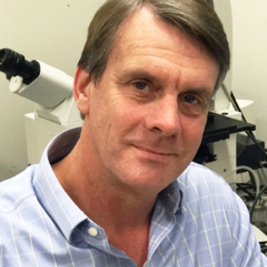A multidisciplinary team of researchers from Children’s Hospital of Philadelphia (CHOP) and the Perelman School of Medicine at the University of Pennsylvania (Penn) showed how the “batteries” of cells are highly implicated in whether patients with the chromosome 22q11.2 deletion syndrome develop schizophrenia. The results of the study may eventually lead to targeted prevention and treatment strategies for patients with the condition.
The findings were published today in JAMA Psychiatry.
22q11.2 deletion syndrome (22q) is a chromosomal difference that occurs in approximately one out of every 2,000 births and is associated with varying degrees of medical issues affecting every system in the body, including the developing heart, immune system, palate, and brain. 22q is also associated with behavioral health challenges such as attention deficit hyperactive disorder, autism spectrum disorder and anxiety. These symptoms can be observed during childhood and can present as psychiatric illness in older adolescents and adults. In fact, this group is roughly 25 times more likely to develop schizophrenia than those in the general population, providing an opportunity to understand the genetic cause of the condition and develop novel therapeutics to treat it.
In a prior study, CHOP researchers studied stem cell-derived neurons and demonstrated that, compared with healthy controls, patients with 22q and schizophrenia had mitochondrial dysfunction. However, that study did not account for 22q patients who had not developed schizophrenia.

Stewart A. Anderson, MD
“Schizophrenia is a very complex mental health disorder, and it can be particularly debilitating for patients with 22q when coupled with a myriad of other health challenges,” said senior study author Stewart A. Anderson, MD, Director of Research in the department of Child and Adolescent Psychiatry and Behavioral Services and associate director of the Lifespan Brain Institute at CHOP and Penn. “In this most recent study, it was important to define the role mitochondria play in determining which patients with 22q – particularly teenagers – are likely to develop schizophrenia.”
Using different lines of stem cells than were used for the prior study, the researchers compared mitochondrial function and the expression of related genes from adults with 22q and a control group, with the 22q group including neurons from individuals with and without a schizophrenia diagnosis.
The researchers showed again that mitochondrial function was impacted in patients with 22q and a schizophrenia diagnosis, with reduced levels of ATP, a major energy source for cells produced largely by mitochondria. However, ATP levels were not reduced in patients with 22q who were not diagnosed with schizophrenia. In fact, the expression of multiple genes encoding for oxidative phosphorylation, a process that helps produce ATP, was upregulated compared with both the 22q and schizophrenia group and the control group. These findings suggest that increased mitochondrial biogenesis is associated with the absence of schizophrenia in 22q.

Douglas C. Wallace, PhD
“Bioenergetics and mitochondria have historically not been thought to play a significant role in autism spectrum disorders and schizophrenia, but our findings from this study coupled with previous findings show that mitochondrial dysfunction may play an important role in these neuropsychiatric disorders,” said co-author Douglas C. Wallace, PhD, Director of the Center for Mitochondrial and Epigenomic Medicine at CHOP. “Recognizing the role of mitochondrial dysfunction in neuropsychiatric disorders may lead to the development of better diagnostic tools as well as targeted treatments for patients with 22q-associated schizophrenia.”

“Patients with 22q present with a wide variety of symptoms, and while our team helps families navigate these challenges across many different medical specialties, the sheer number of associated features can significantly impact both the patients and their families’ lives – with behavioral health being the most complex and difficult to manage,” said co-author Donna M. McDonald-McGinn, MS, CGC, Director of the 22q and You Center and Associate Director of Clinical Genetics Center at CHOP. “The more we know about how each individual is affected at a deeper genomic level, the more resources we can provide to families, while pivoting future research efforts towards finding new ways to help our patients, as well as those in the general population with schizophrenia but without 22q.”
This work was supported by National Institutes of Health grants MH110185, MH066912, MH108592, MH110185, MH191719, MH087636, MH119738, MH119737, MH119219, and MH101718, and the Penn/CHOP Lifespan Brain Institute.
Li et al, “Association of Mitochondrial Biogenesis With Variable Penetrance of Schizophrenia.” JAMA Psychiatry, online May 19, 2021. DOI: 10.1001/jamapsychiatry.2021.0762.
Featured in this article
Specialties & Programs
A multidisciplinary team of researchers from Children’s Hospital of Philadelphia (CHOP) and the Perelman School of Medicine at the University of Pennsylvania (Penn) showed how the “batteries” of cells are highly implicated in whether patients with the chromosome 22q11.2 deletion syndrome develop schizophrenia. The results of the study may eventually lead to targeted prevention and treatment strategies for patients with the condition.
The findings were published today in JAMA Psychiatry.
22q11.2 deletion syndrome (22q) is a chromosomal difference that occurs in approximately one out of every 2,000 births and is associated with varying degrees of medical issues affecting every system in the body, including the developing heart, immune system, palate, and brain. 22q is also associated with behavioral health challenges such as attention deficit hyperactive disorder, autism spectrum disorder and anxiety. These symptoms can be observed during childhood and can present as psychiatric illness in older adolescents and adults. In fact, this group is roughly 25 times more likely to develop schizophrenia than those in the general population, providing an opportunity to understand the genetic cause of the condition and develop novel therapeutics to treat it.
In a prior study, CHOP researchers studied stem cell-derived neurons and demonstrated that, compared with healthy controls, patients with 22q and schizophrenia had mitochondrial dysfunction. However, that study did not account for 22q patients who had not developed schizophrenia.

Stewart A. Anderson, MD
“Schizophrenia is a very complex mental health disorder, and it can be particularly debilitating for patients with 22q when coupled with a myriad of other health challenges,” said senior study author Stewart A. Anderson, MD, Director of Research in the department of Child and Adolescent Psychiatry and Behavioral Services and associate director of the Lifespan Brain Institute at CHOP and Penn. “In this most recent study, it was important to define the role mitochondria play in determining which patients with 22q – particularly teenagers – are likely to develop schizophrenia.”
Using different lines of stem cells than were used for the prior study, the researchers compared mitochondrial function and the expression of related genes from adults with 22q and a control group, with the 22q group including neurons from individuals with and without a schizophrenia diagnosis.
The researchers showed again that mitochondrial function was impacted in patients with 22q and a schizophrenia diagnosis, with reduced levels of ATP, a major energy source for cells produced largely by mitochondria. However, ATP levels were not reduced in patients with 22q who were not diagnosed with schizophrenia. In fact, the expression of multiple genes encoding for oxidative phosphorylation, a process that helps produce ATP, was upregulated compared with both the 22q and schizophrenia group and the control group. These findings suggest that increased mitochondrial biogenesis is associated with the absence of schizophrenia in 22q.

Douglas C. Wallace, PhD
“Bioenergetics and mitochondria have historically not been thought to play a significant role in autism spectrum disorders and schizophrenia, but our findings from this study coupled with previous findings show that mitochondrial dysfunction may play an important role in these neuropsychiatric disorders,” said co-author Douglas C. Wallace, PhD, Director of the Center for Mitochondrial and Epigenomic Medicine at CHOP. “Recognizing the role of mitochondrial dysfunction in neuropsychiatric disorders may lead to the development of better diagnostic tools as well as targeted treatments for patients with 22q-associated schizophrenia.”

“Patients with 22q present with a wide variety of symptoms, and while our team helps families navigate these challenges across many different medical specialties, the sheer number of associated features can significantly impact both the patients and their families’ lives – with behavioral health being the most complex and difficult to manage,” said co-author Donna M. McDonald-McGinn, MS, CGC, Director of the 22q and You Center and Associate Director of Clinical Genetics Center at CHOP. “The more we know about how each individual is affected at a deeper genomic level, the more resources we can provide to families, while pivoting future research efforts towards finding new ways to help our patients, as well as those in the general population with schizophrenia but without 22q.”
This work was supported by National Institutes of Health grants MH110185, MH066912, MH108592, MH110185, MH191719, MH087636, MH119738, MH119737, MH119219, and MH101718, and the Penn/CHOP Lifespan Brain Institute.
Li et al, “Association of Mitochondrial Biogenesis With Variable Penetrance of Schizophrenia.” JAMA Psychiatry, online May 19, 2021. DOI: 10.1001/jamapsychiatry.2021.0762.
Contact us
Ben Leach
Behavioral Health Integrated Program